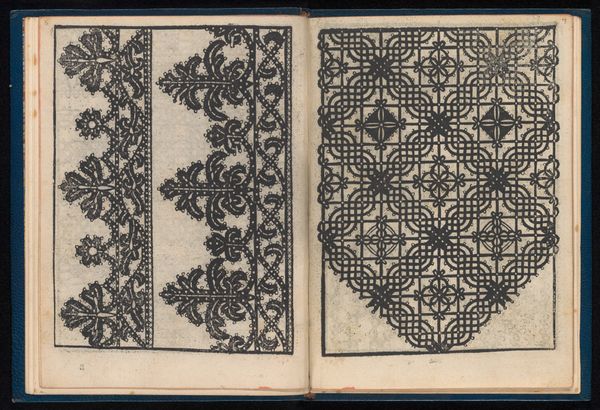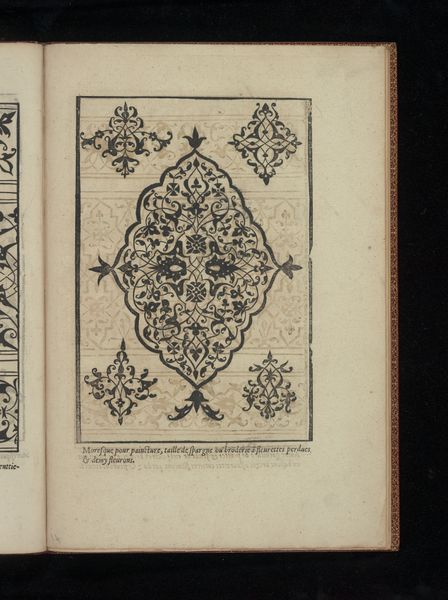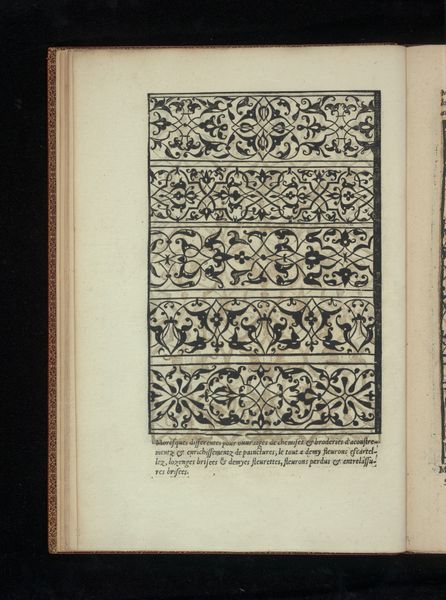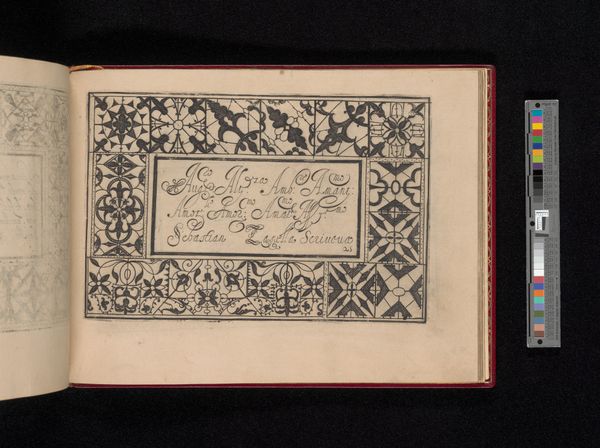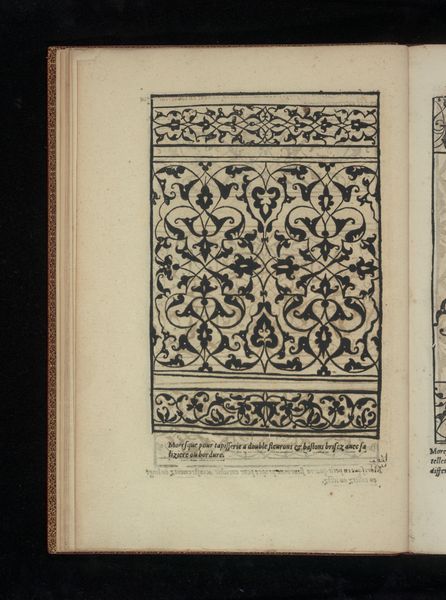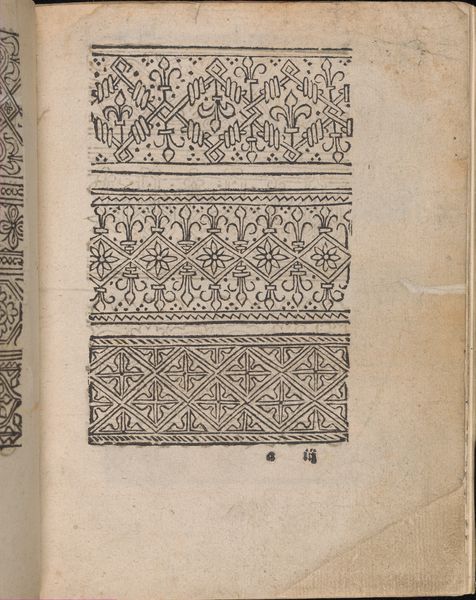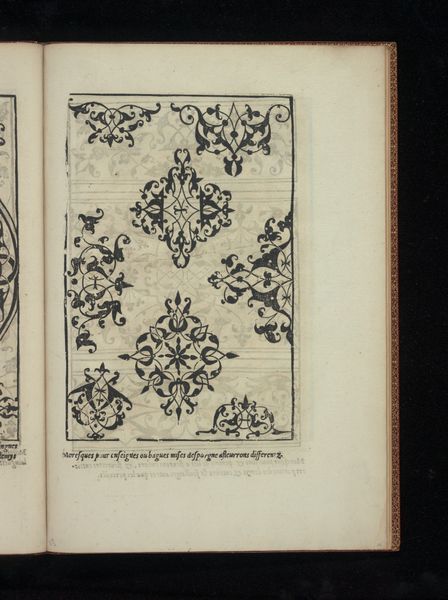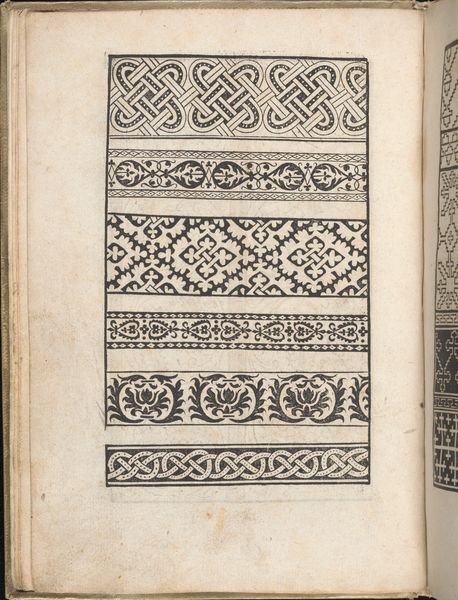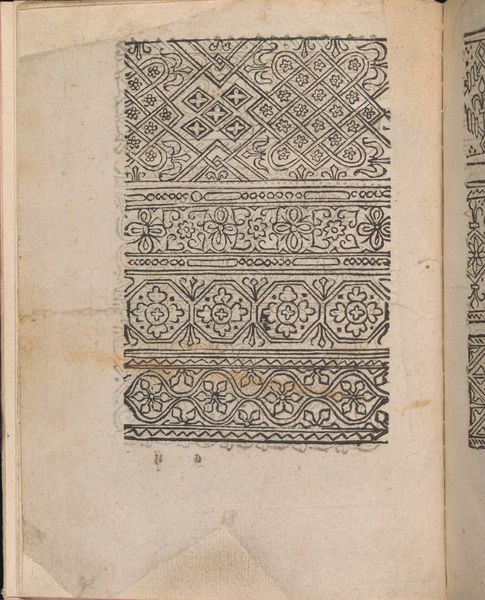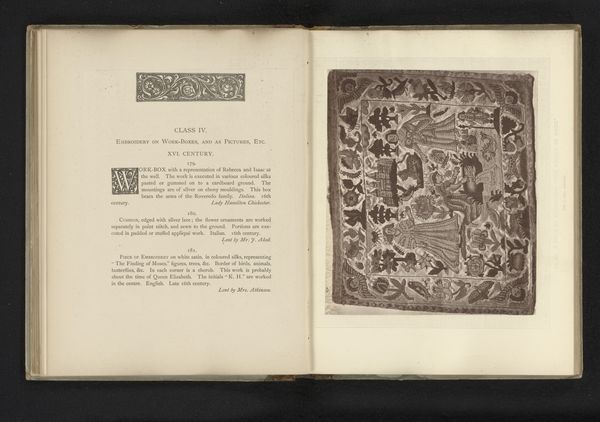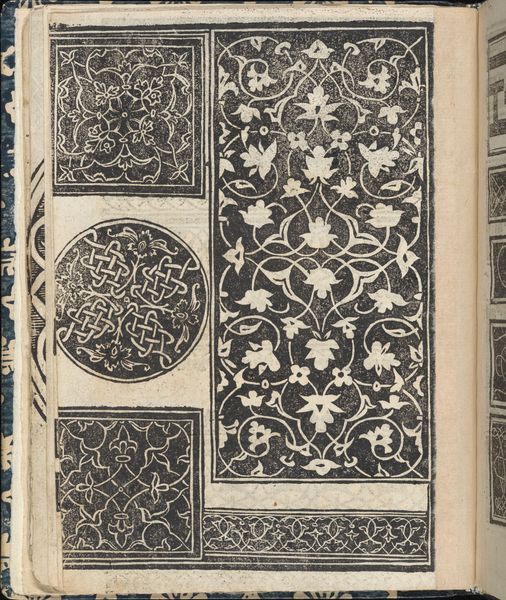
drawing, woodblock-print, print, textile, paper, ink, woodblock-print
#
drawing
#
woodblock-print
# print
#
textile
#
paper
#
11_renaissance
#
ink
#
woodblock-print
Dimensions: 8 3/16 x 5 7/8 x 3/4 in. (20.78 x 14.94 x 1.91 cm)
Copyright: Public Domain
Editor: So, this is "Tracings for Fancywork," dating from around the 16th century and created by Francesco Calepino. It's a mix of drawing, woodblock print, and textile on paper. It looks almost like an instruction manual. I am struck by the delicate detail of these patterns on the right and the contrast between that and the printed designs on the left. How do you interpret this work in its historical context? Curator: It's interesting to consider this not just as a display of patterns, but as a tangible piece of social history. These designs were tools of empowerment for women, particularly in the Renaissance, providing a means of creative expression and sometimes economic independence through textile production. This kind of book would have circulated among specific social circles, setting the aesthetic standards of the time. Do you think this book helped to standardize certain visual patterns that women followed? Editor: That’s fascinating. I hadn't thought about standardization. It seems intuitive that this would reflect cultural preferences of its time and influence what others may want. But were these patterns accessible to everyone, or only certain classes? Curator: That’s a crucial point. The production and consumption of luxury textiles, even smaller elements like lace, were heavily dictated by social class. A book like this would have been accessible to wealthier women. Therefore, its patterns would likely reflect and perpetuate the aesthetic values of the elite, reinforcing class distinctions through visual culture. How do you think this reinforces the privilege of those women? Editor: It positions them as trendsetters. The ability to access and create using these designs signals both wealth and participation in a specific, privileged culture. That has opened up new avenues to reflect on how the art of sewing or textiles are portrayed in our culture and media, both now and during that time period. Curator: Exactly. And it reveals how seemingly simple images played an active role in the complex socio-political fabric of the time. Understanding this makes art so much richer.
Comments
No comments
Be the first to comment and join the conversation on the ultimate creative platform.
